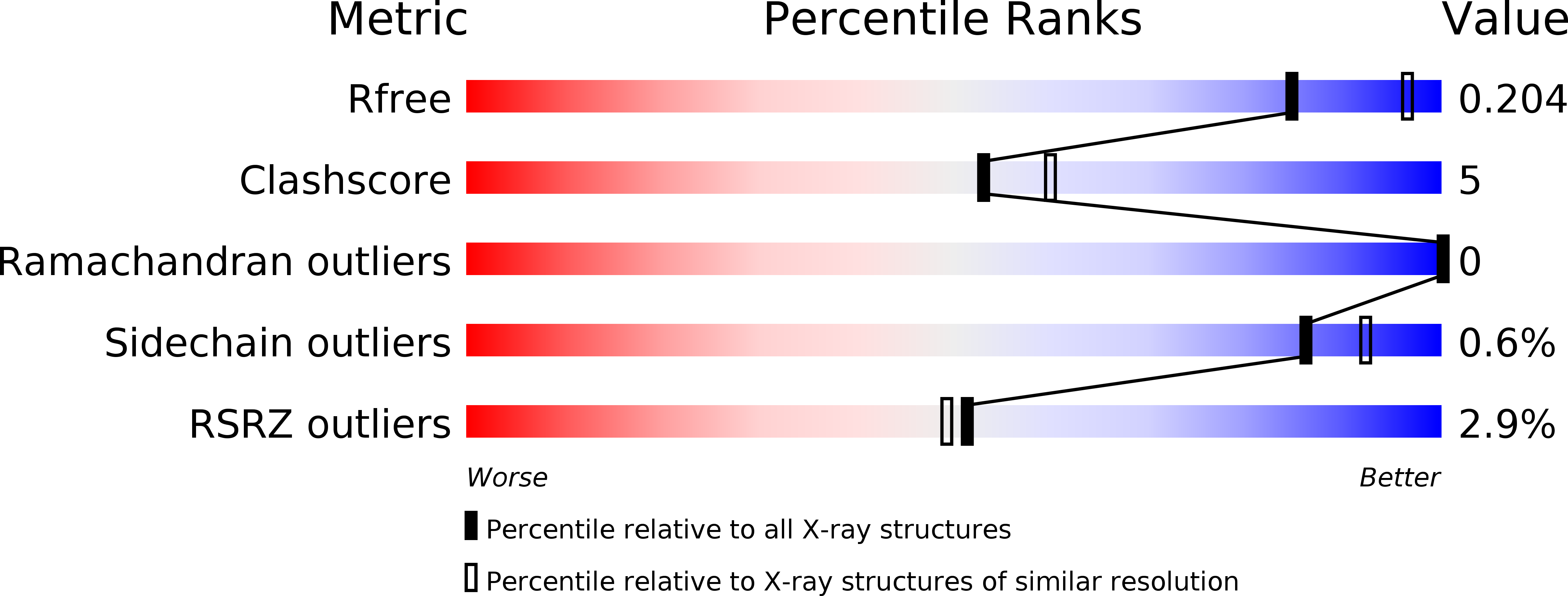
Deposition Date
2015-09-01
Release Date
2015-11-25
Last Version Date
2023-09-27
Entry Detail
PDB ID:
5DJ3
Keywords:
Title:
Structure of the PLP-Dependent L-Arginine Hydroxylase MppP with D-Arginine Bound
Biological Source:
Source Organism:
Streptomyces wadayamensis (Taxon ID: 141454)
Host Organism:
Method Details:
Experimental Method:
Resolution:
2.23 Å
R-Value Free:
0.19
R-Value Work:
0.16
R-Value Observed:
0.16
Space Group:
P 21 21 21


